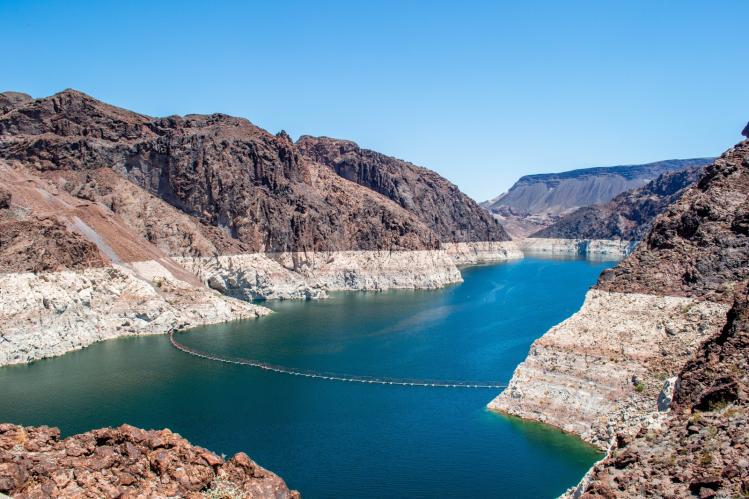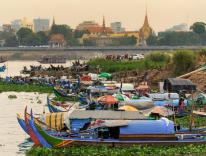
Deadline after deadline has passed, but the seven states that draw their water from the Colorado River system have yet to agree on the cuts required to save the fast-shrinking river. Despite a short reprieve delivered by this year’s unusually wet winter, the river is still heavily over-allocated. Climate change and aridification guarantee that the problem won’t resolve itself. The federal government has asked for a cut of up to 30 percent in water use as the river approaches “dead pool”—water levels too low to flow downstream from the reservoirs at the Hoover and Glen Canyon Dams. Reaching dead pool would threaten the water and electricity supply of California, Nevada, Arizona, and several Indian reservations.
While both Upper and Lower Basin states have been involved in the negotiations, the Biden administration has the power to impose cuts only on the three Lower Basin states, which draw their water from the reservoirs rather than directly from the river. The administration’s preliminary recommendations propose various alternatives for how the water could be divided. One option would be to prioritize senior water rights, protecting California agriculture at the expense of Nevada and Arizona residents, who would receive almost no water after California had taken its share. Another option would be to impose more uniform cuts across all three states. Overriding senior water rights would invite lawsuits and raise prices on the quarter of the nation’s food that comes from the region, as well as for all the dairy and meat from cows fed by the alfalfa grown there. But the administration has signaled its willingness to set aside longstanding rights to ensure that tribes and residents in the other states have access to clean water—a more urgent need than granting virtually limitless water to mega-farmers to grow whatever thirsty crops maximize their profits.
While much has been made of wasteful golf courses or swimming pools, the luxury excesses of urban and suburban areas are only a drop in the bucket: 80 percent of the water in the region is used for agriculture, and that’s where the most significant changes must occur. For the remaining 20 percent, cities like Las Vegas provide a good model for water recycling and municipal regulations, such as banning grass lawns. Developers, meanwhile, must face the harsh reality that the desert cannot sustain infinite growth.
For farmers, a patchwork of solutions could provide partial relief even in the wake of water cuts. Replacing spray irrigation with subsurface drip irrigation could halve the amount of water needed to grow alfalfa—but right now, only 1 percent of farms use it, since it is more expensive and labor intensive to maintain. Some of the money dedicated to drought relief in the Inflation Reduction Act could be used to help farmers make the change. It could also be used to fix leaky irrigation canals damaged by land subsidence caused by the overuse of groundwater. Other kinds of irrigation used by Indigenous peoples could be effective for certain crops, and the government could offer farmers incentives to grow those crops—for example, tepary beans adapted to the desert, rather than almonds that require a gallon of water per nut. It’s not impossible to maintain some farming in the desert. But it is impossible to continue farming the same way. We can no longer treat a finite water source as if it were infinite or allow massive corporations to use free water for water-intensive monocultures. As the comment period continues and states keep negotiating, the exact nature of the cuts remains undecided. But the need for those cuts is no longer up for debate.
Please email comments to [email protected] and join the conversation on our Facebook page.
Previous Story
Mother’s Day
Next Story
One Heartbreaking Friendship

